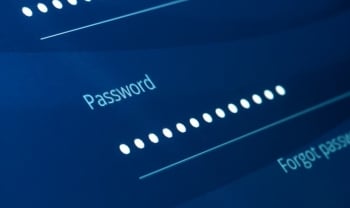What to Expect from a Zero Trust Approach

Every company has a digital presence nowadays. While this brings numerous benefits for businesses, it also poses a number of risks. Cybercriminals are finding more and more ways to circumvent security measures and access data. If protection is not strong enough, the data of organizations, their customers, and partners could be compromised, with dire consequences for companies.
Increasing digitalization, coupled with the evolution of cybercriminal tactics, is resulting in a surge of cybersecurity incidents. This worrying trend is shown in the latest Data Breach Report from the Internet Theft Resource Center (ITRC), which states that 2,365 cyberattacks were committed in 2023, affecting more than 300 million victims.
Armed with this knowledge, it is essential that companies take measures and shield their systems to prevent unidentified users from accessing sensitive information in order to reduce the risk of cyber attacks.
Zero-Trust 101: Everything you need to know
Protecting a company's systems from external agents should be a priority for any employee, whether in IT or other departments. In the event of an attack, failure to take these measures could cause irreparable economic and reputational damage.
Implementing a cybersecurity protocol that shields systems from malicious agents is a basic but essential requirement. A zero trust approach can prove the perfect ally in this respect. As this method is based on default distrust, it only allows users who are confirmed as secure and trusted to access a system. This allows greater access control, increasing the protection of systems and thereby reducing the risk of suffering a cybersecurity breach that compromises the integrity of a company's sensitive information.
We know that a zero trust approach can enhance the protection of companies, all thanks to a series of functionalities built into the zero trust structure. Below, we highlight some key tools to establish a zero trust model in companies:
-
Continuous and real-time monitoring:
The basis of zero trust is to ensure that the identity of each user is verified every time they request access. This means you must have the right solutions in place to perform continuous monitoring and endpoint assessment to confirm that they are trustworthy. In addition, deploying AI-based solutions such as EPDR (Endpoint Protection, Detection, and Response) can minimize the error margin while optimizing costs for IT teams.
-
Response protocol:
It is also key to incorporate response protocols to establish a zero trust approach. This enables teams to respond to threats proactively and prevent them from spreading.
-
Regulatory compliance:
There are currently numerous regulations that require data protection, especially for third parties. In this regard, a zero trust model can help companies comply, for example, with the GDPR (General Data Protection Regulation) and avoid potential sanctions.
In short, zero trust is a must-have architecture for companies that want sophisticated and effective data protection. By combining a cybersecurity protocol and good hygiene and habits on the part of the company and its employees, we will ensure an approach that protects organizations against threats.
If you would like to learn about zero trust and how it can help protect companies, check out our latest e-book.


